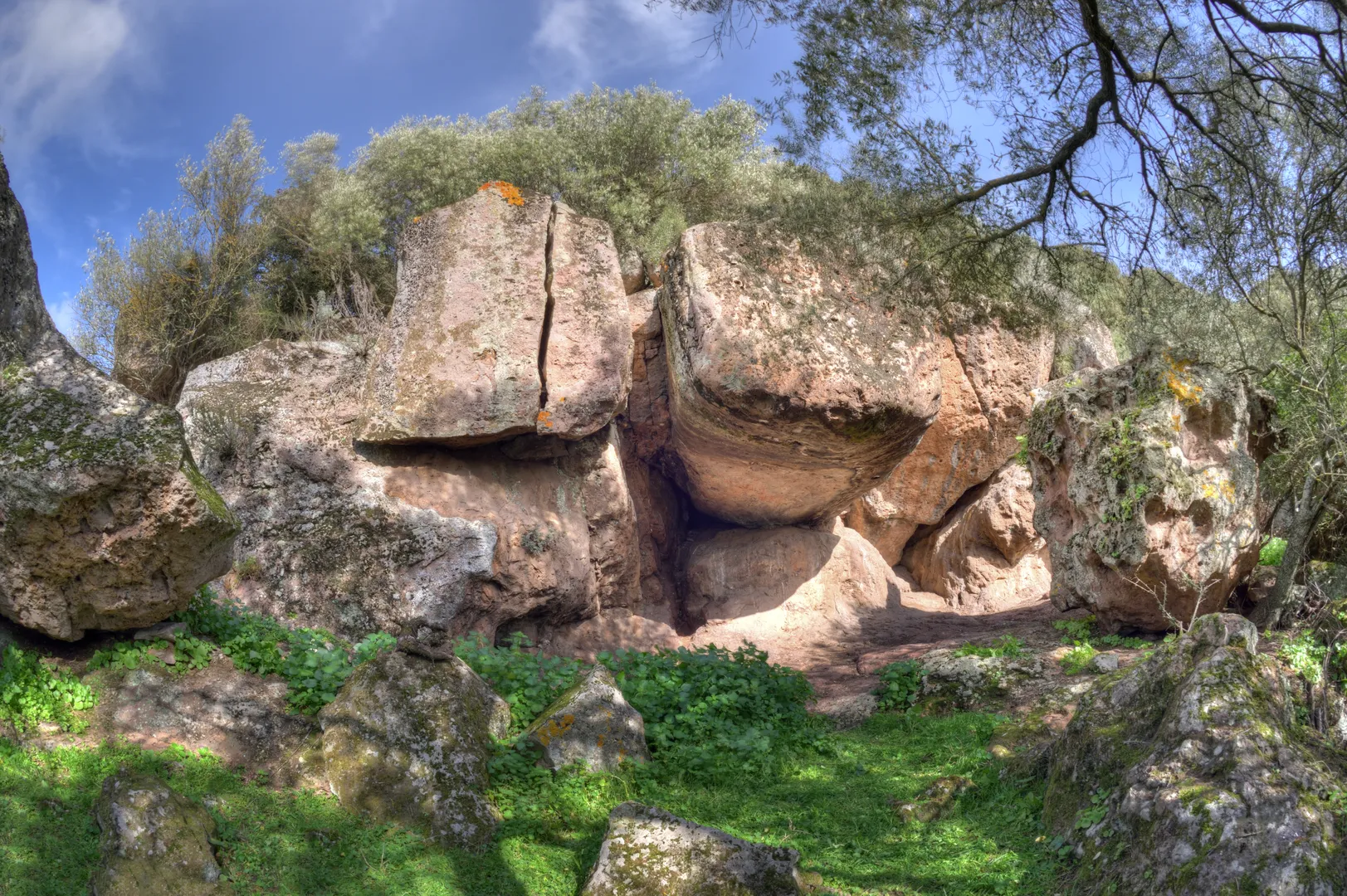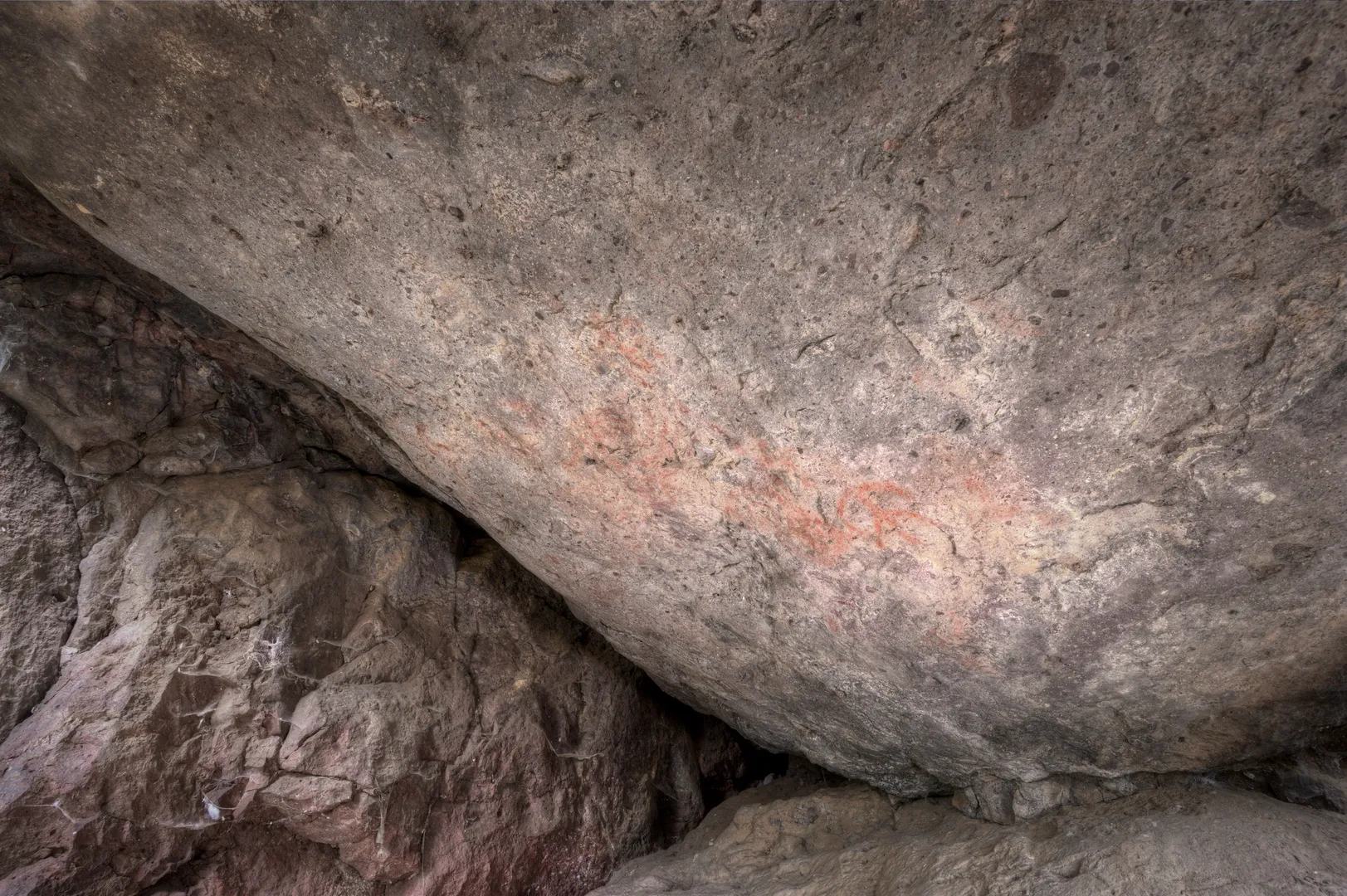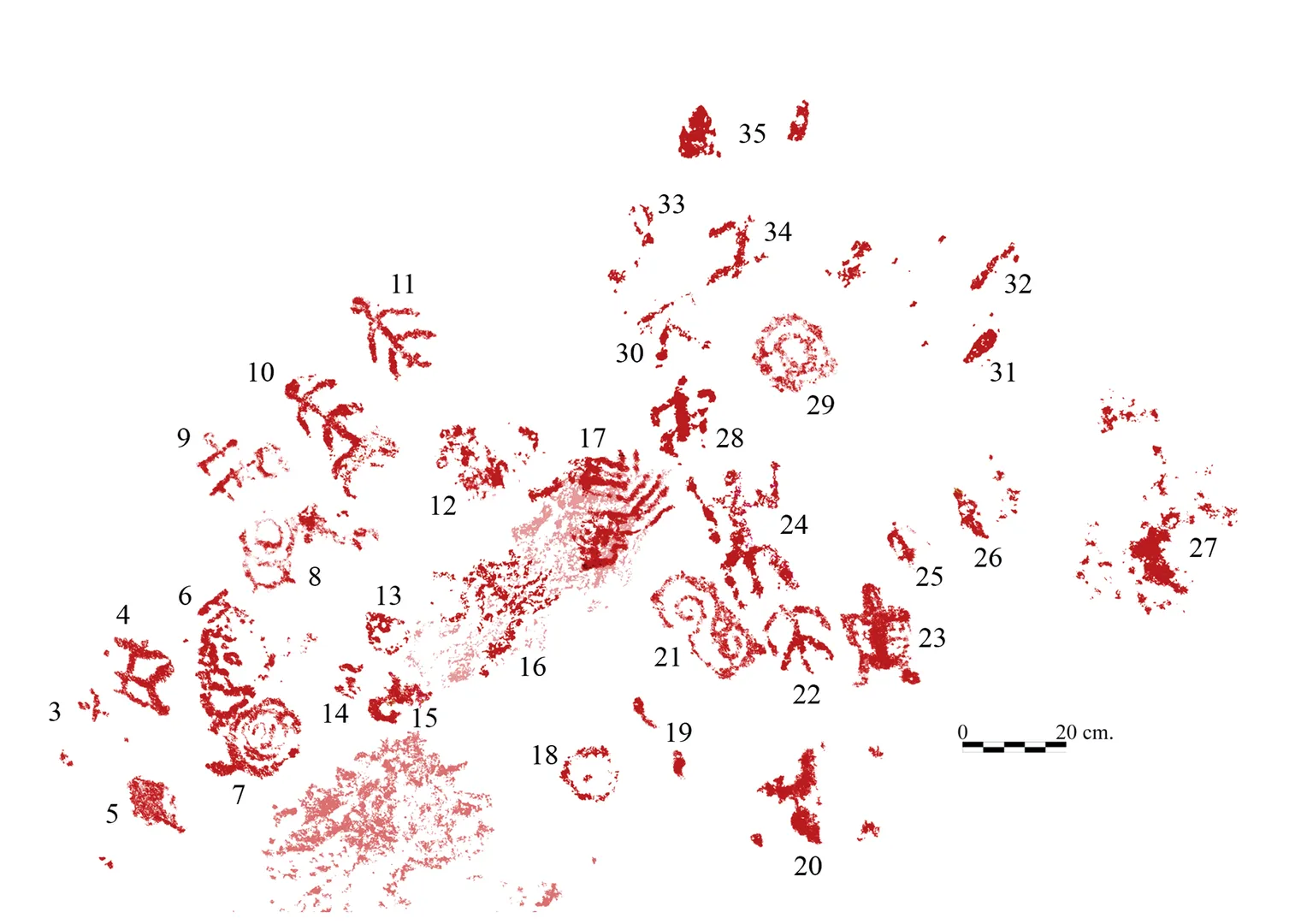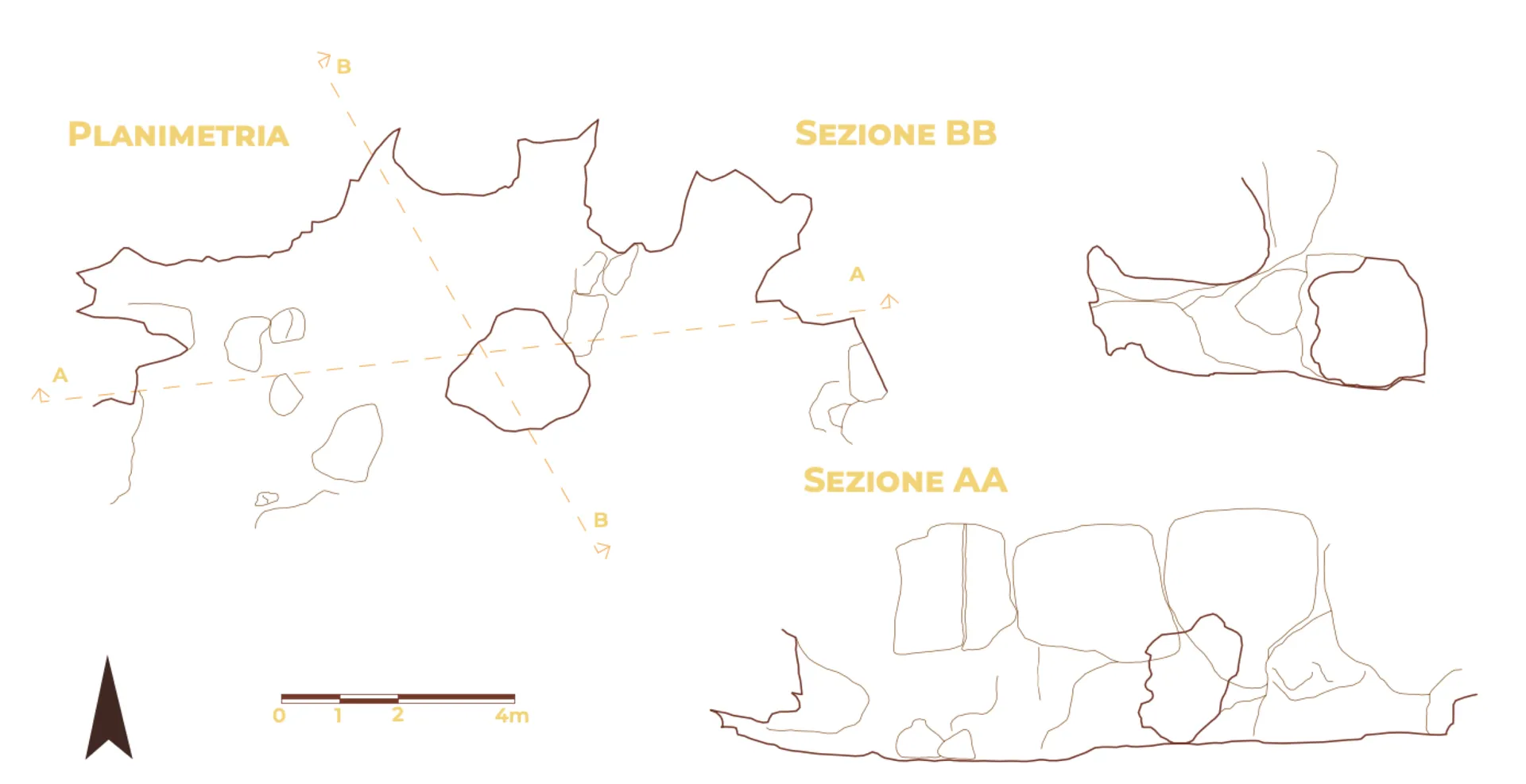Shelter of Luzzanas
A natural cavity used as a shelter and place of worship during the Neolithic period, enriched with rock paintings and evidence of prehistoric life.
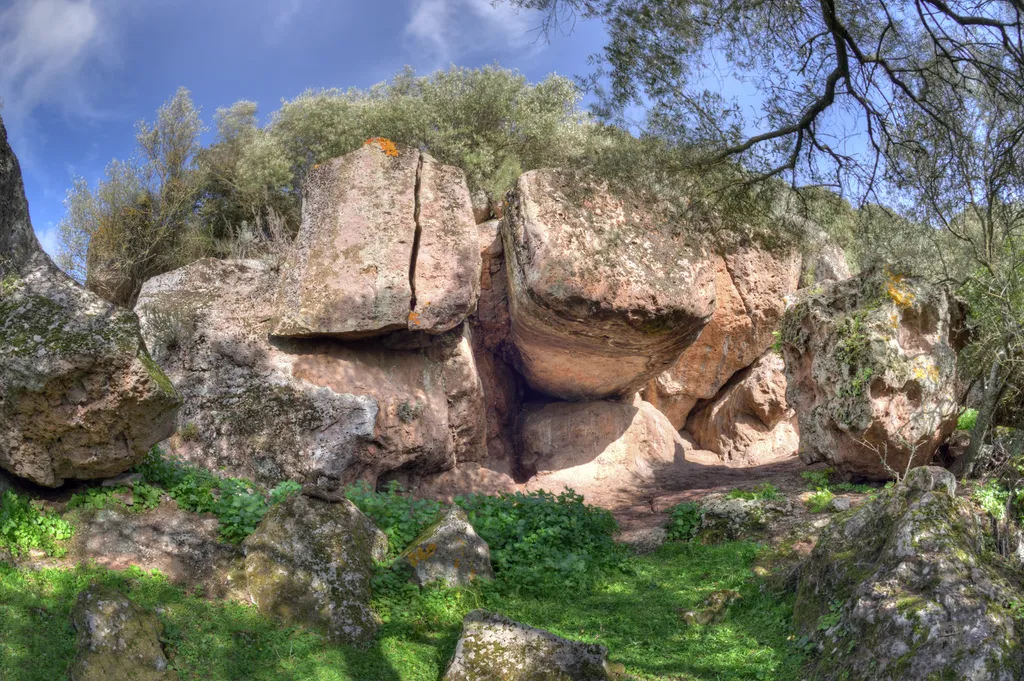
Shelter of Luzzanas
Shelter of Luzzanas
Contact
Access information
Drive along the Sassari-Olbia state road, turn left onto the road to Martis, pass the village of Sant'Antioco and the crossroad on the left that leads to the church, then immediately turn left and follow the path to the gate of the Pala property, finally continue to the sheds, where the shelter is located, along the ridge overlooking the church.
The shelter is located in the countryside of Ozieri along a transhumance path that leads to the Gulf of Asinara and dominates a floodplain, marked by the junction of Rio Mannu with Rio de sa Costa, providing a favorable setting for the development of productive economy and prehistoric human settlements in the Neolithic and Eneolithic ages.
In 1988, the shelter was reported to the Civic Archaeological Museum of Ozieri by Pietro Pala, the owner of the land. The first edition was published by Paola Basoli (1989), who then further analyzed the pictorial composition and published the results (1992). The processing obtained via the Dstretch software allowed the identification of additional thirty-six motifs, almost no longer legible to the naked eye, published by Liliana Spanedda (2017).
The shelter is particularly relevant due to its pictorial decoration. In Luzzanas, the artist depicted a parade of men, animals, plants, cosmological and cultural elements. The figurative repertoire is part of the cultural trend of Franco-Iberian schematic art, widespread on the coasts and islands of the Mediterranean between the final stages of the Neolithic and the initial phases of the Copper Age, found on Sardinian vases and various types of media: caves, hypogea, menhirs, slabs, megalithic tombs and rocks.
The composition occupies for the most part a section of a wall of about 2x1 m and consists of figurative motifs painted with ocher, some of which are found in the adjacent left (motifs 1-2) and right (motif 36) panels.
Thirteen mostly complete figures appear, being arranged in groups of two or three, where a human stylized figure is represented, featuring arched or bend arms and legs, heads and genitalia; sometimes the legs are spread apart (4-30); sometimes they include hands and feet (24-23); sometimes they include a full body (28-23); sometimes they carry weapons (4-24); sometimes they mount on an animal (9-10). The anthropomorphic figure 24 has a peculiar character, with more full bodies than the others, in a central position and in worshiping attitude, holding weapons or signs of power in both hands.
There are also circular motifs revolving around a central spot (18); a radiating circle (1) and multiple radiating circles (7); a current double spiral design (21); branch-shaped motifs (16-17); cross-shaped motifs (3-11); an idol with eyes (36).
The communication system adopted highlights a complex society organized hierarchically and based on identity values. These elements connect the shelter to a Copper Age social model outlined and shared by scholars, a reminiscence of the past but also a confirmation of the present.
Bibliography
- Basoli P. 2023, Il riparo di Luzzanas, Ozieri (SS), in G. Tanda, L. Doro, L. Usai, F. Buffoni (eds.), Arte e architettura nella Sardegna preistorica. Le domus de janas (candidatura unesco 2021), Cagliari: 168-171.
